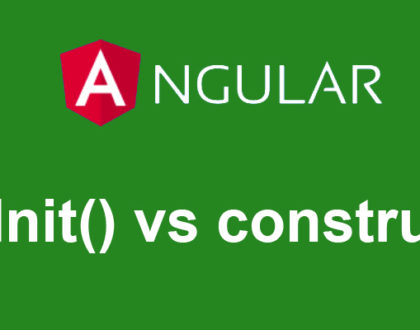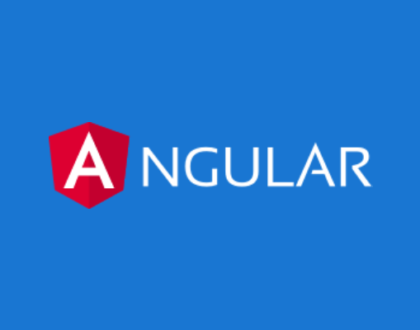Why Angular for Your Project?

by Maihan Nijat
Are you wondering to use Angular for your current or next project? If yes, this blog helps you to learn a little bit about its history, fundamentals, advantages, and community. Before continue reading, bear in mind that the blog is not about helping you to learn code, how to setup Angular or setup project.
Introduction
Angular is a platform that makes easy-to-build dynamic web applications and empowers developers building applications that live on the web, the mobile or the desktop. According to Google Trends, Angular is the peak popularity in recent 12 months (as of November 2017) compared to similar frameworks: ember.js and backbone.js.
History
Wikipedia has rich information about Angular’s history which says: Angular originally developed in 2009 by Miško Hevery at Brat Tech LLC for easy-to-make web applications for the enterprise. It has been many releases, and current stable version Angular 5 was released just a month ago (as of December 2017).
Advantages
It might be dozens of advantages, but the blog only focuses on the following important ones which help you to decide whether use Angular or not:
- Easy to understand: You are not starting from scratch as it is not a new language but requires HTML, CSS, and JavaScript at least intermediate-level knowledge to begin with your project.
- Less written code and easily maintainable code: It creates necessary structure, and populates most the code while you create a new project. It is easy to maintain because of the folder structure, name conventions and readable code.
- Data handling made simple: It doesn’t require an intense development effort to provide interaction with users. It makes it easy with expressions, filters, and form validation. a) JavaScript-like code snippets in the form of expressions are placed in and also used directly in directive attributes. b) The value of an expression could be formatted with Filters for presenting to users and can be used in view templates, controllers or services. Angular has a large number of built-in filters, but you can define your own as well. c) Angular validates forms with providing client-side validation on input fields (input, textarea, select) and notifies users about the current state of form or inputs.
- Two-way data binding: Real-time synchronization between model and view. Angular binds model properties with UI-elements in the view and any changes in one of them propagated to another. For instance: We have a model which contains name variable and bind with two elements, paragraph tag, and input in the view. The name variable is modified whenever the user types something in the input and paragraph tag.
- HTML Template: Views are written in HTML and designed in CSS. It also allows using popular CSS frameworks like Bootstrap and Foundation.
- Extend HTML: Angular does not limit you to use HTML tags but allows you to use your own defined tags, and attributes like XML.
- Single-Page-Application (SPA): Angular framework makes it easy to create SPA in a very clean, and maintainable way. SPA is a better choice if your content fits on the single page because sites are able to provide the feel of a phone/tablet application.
Fundamentals
Angular uses Model View Controller (MVC) design model. MVC separates an application into model, view, and controller.
The model contains data related logic or data exchanged between view and controller.
The view contains HTML template or GUI related logic and elements such as text, graphics, and multimedia. CSS code doesn’t place in view but manages in a separate file.
The controller plays a role of a middle person (interface) between model and view. According to Microsoft, Controllers process incoming requests, handle user input and interactions and execute appropriate application logic.
Also, Angular is using modules and components important mechanism. Applications are created from similar combined Modules which contains related components, directives, pipes, and services. Components are a specific type of directive that uses an uncomplicated configuration proper for a component-based application structure.
Community
Angular has a large open community. Really? Yes, StackOverflow contains 246,012 questions associated with Angular and GitHub Angular repository has 552 contributors.
The reach-community of contributors that are not only building, and contributing back to Angular but also contributing to ecosystem across the board, whether, it’s like helping with consulting, training, and building dev tools or even just building components that have been built for Angular applications. Does it matter? Absolutely! Developers and new-learners appreciate having free support from a community without waiting for long.
Also, Angular is developed and maintained by Google and offered as open source. What does it mean for you? Google has skilled and highly-available engineers to answer your all Angular related questions. It is also worth to mention that Angular has many releases since it’s developed which means the community is committed to fix the problems and enhance the framework.
What is Built with Angular?
Keep the advantages we discussed above in mind, Angular provides a great platform to build a website. Hundreds of websites powered by Angular will appear if you do a quick search on, but we list here five websites you might familiar with:
Conclusions
Angular is a platform which builds light-weight dynamic web applications and website that customers love to use, developers love to build and has the community where everyone feels welcome. It is best used for front-end development to make stunning projects with HTML, CSS, and JavaScript all at one place.
Questions to Increase Your Knowledge
- Do you think Angular is a good choice for Hybrid mobile applications?
- Have you used REACT framework? If yes, would you switch it with Angular?
- Do you want to use Angular for your project? Explain your answer, why or why not?
Recommended Posts

What is JavaScript Promise – Explained with examples?
March 23, 2021


